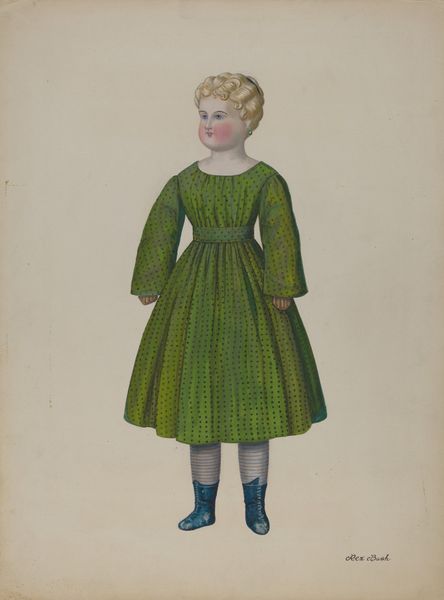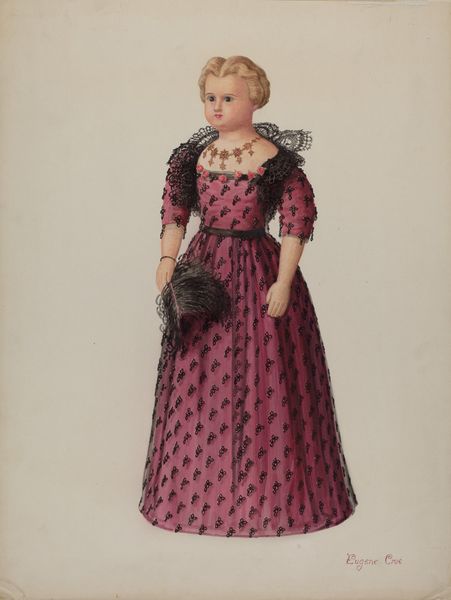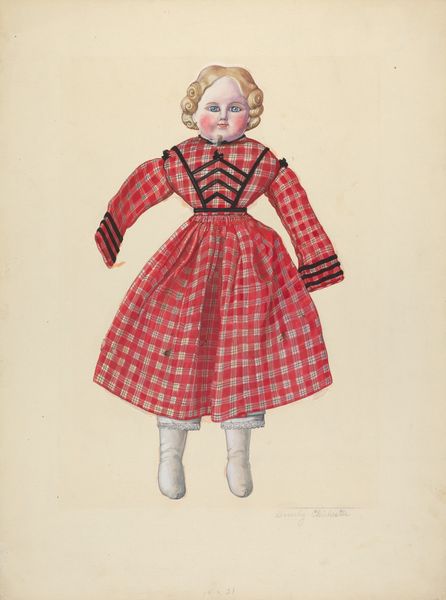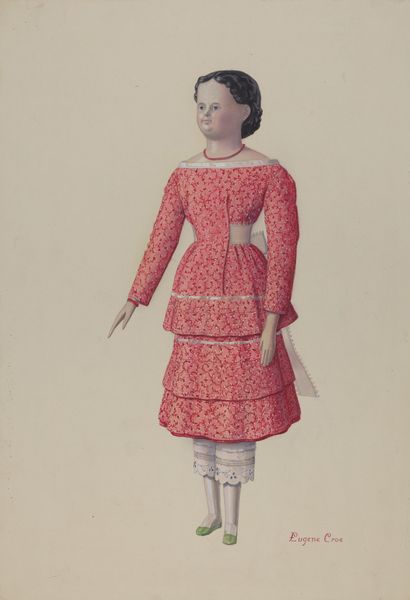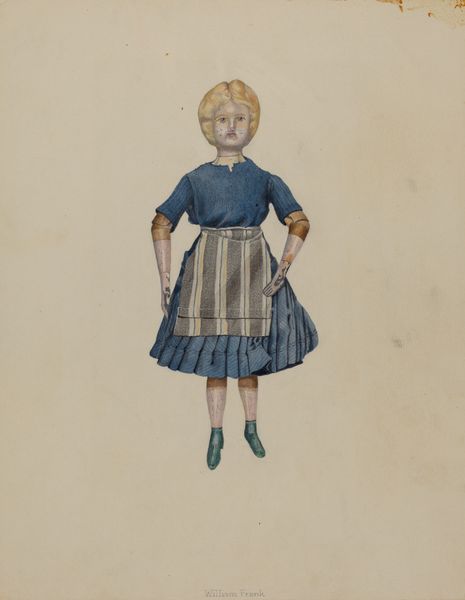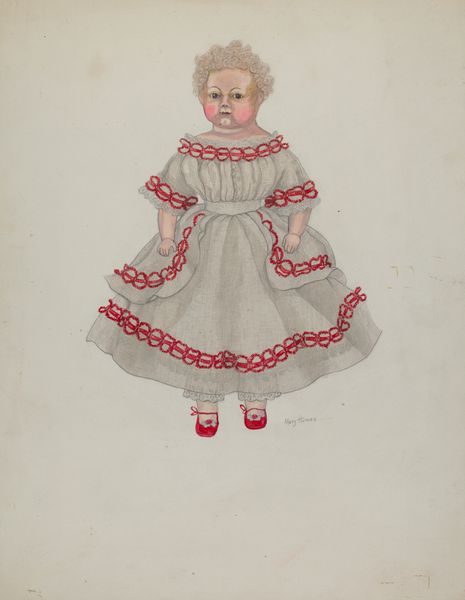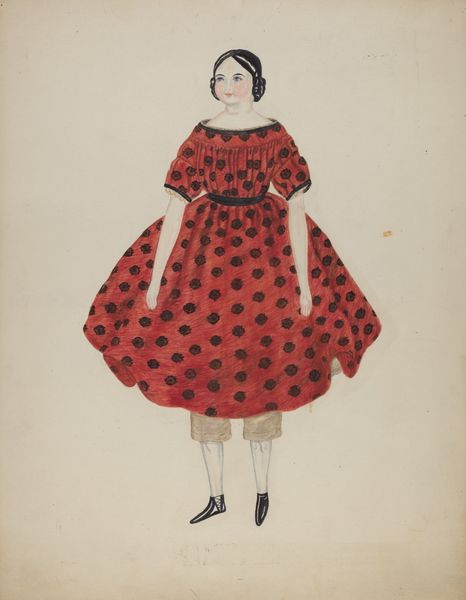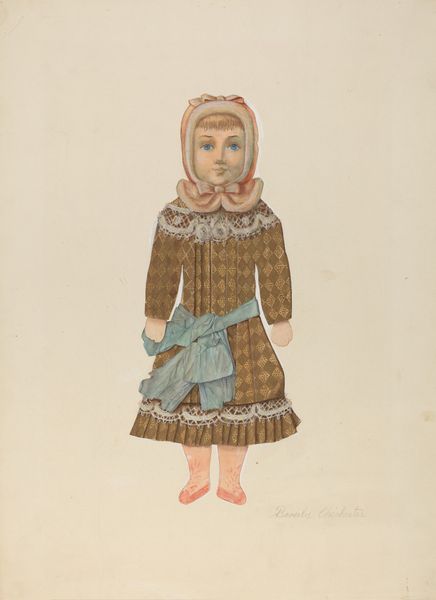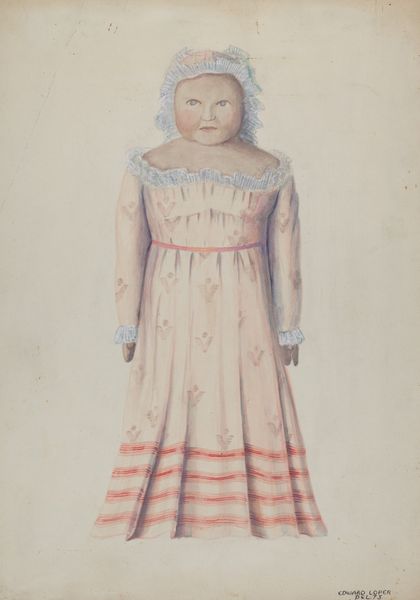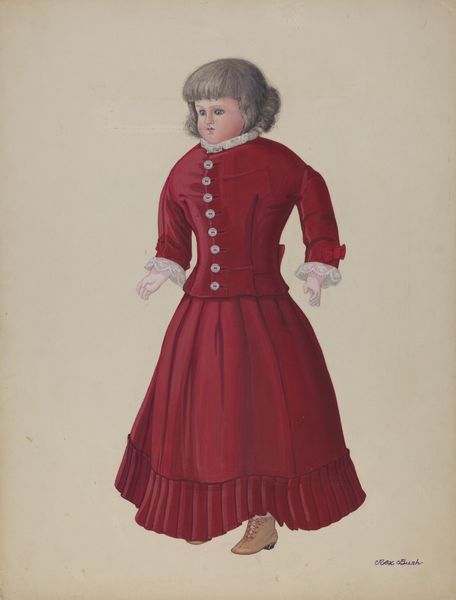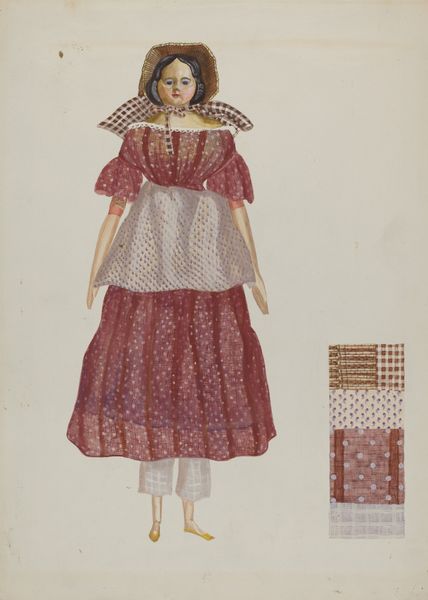
drawing, coloured-pencil, watercolor
#
portrait
#
drawing
#
coloured-pencil
#
watercolor
#
coloured pencil
#
watercolour illustration
#
miniature
Dimensions: overall: 50.9 x 34.2 cm (20 1/16 x 13 7/16 in.) Original IAD Object: 31" high
Copyright: National Gallery of Art: CC0 1.0
Curator: What an intriguing portrait! This is Eugene Croe's "Doll - Lily May," created around 1937. It seems to be a watercolor and coloured-pencil drawing. What strikes you initially? Editor: She's utterly charming, if a little forlorn. There's a stillness about her, amplified by those slightly vacant eyes. I'm also struck by the material rendering—the stiffness of the dress fabric versus the softness implied in her hair. Curator: Croe's choice of medium here speaks volumes. The delicate layering of watercolor and coloured pencil allowed for a precise representation of texture, wouldn't you agree? Considering the date, one wonders if he was attempting to elevate doll-making or perhaps documenting a particular craft tradition. Editor: Precisely. I'm fascinated by how artists utilize and sometimes subvert traditional crafts. The creation of dolls often had a deep-rooted tie to community and female labor. Curator: Absolutely, and looking at it through a historical lens, the image exists within a very specific social fabric. The period was marked by shifts in children's culture, marketing aimed at young consumers, and the commercialization of play itself. This seemingly simple drawing, in essence, highlights those societal undercurrents. How was it intended to be circulated? Editor: The portrait hints at aspirations to capture a sense of personalized luxury, yet made accessible, or the idea of manufactured “precious” objects as children’s personal and domestic spaces were becoming sites of emotional investment and increasingly consumerist engagement. Curator: Agreed. Even her clothing, with its carefully patterned green fabric and frilly collar, points towards middle-class values and aesthetic aspirations. The art hints to the mass consumption and material obsession of the American household. Editor: I'm curious to understand more about how and where this doll design, as seen through this image, was distributed and its broader implications. The market forces driving the art are key. Curator: Well, analyzing art as a marker for cultural trends certainly provides unique perspective. Thank you! Editor: And for opening up the historical frame around such a disarming illustration.
Comments
No comments
Be the first to comment and join the conversation on the ultimate creative platform.
